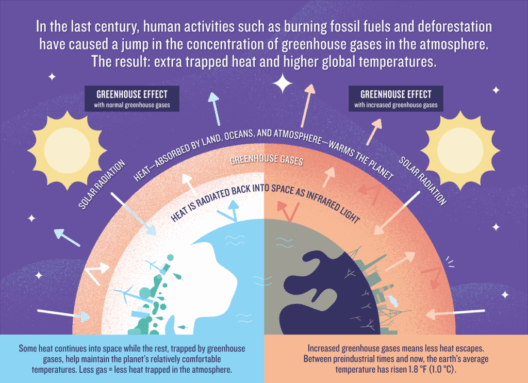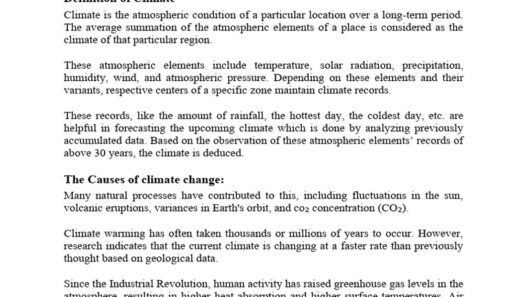Arid climates, characterized by minimal precipitation and extreme temperatures, present a unique ecosystem that demands resilience and adaptation from various life forms. These regions, often shunned for their harshness, also beckon with an undeniable allure, drawing attention to the intricate ways in which both flora and fauna have evolved to coexist in such challenging environments. Understanding the arid climate provides insight not just into the survival mechanisms of its inhabitants, but also into the broader implications of climate change and environmental sustainability.
The essence of aridity lies in its definition. An arid climate typically refers to regions that receive less than 250 millimeters of rainfall annually, distinguishing itself from semi-arid climates that receive slightly more. Such environments are found predominantly in the subtropical high-pressure belts as well as in rain shadows of mountains. This climatic condition nurtures a distinct interplay of physical geography and biotic components, rendering it one of the most fascinating topics in environmental science.
One of the most striking features of arid climates is their extreme temperature variations. During the day, the sun beats down relentlessly, often leading to soaring temperatures that can exceed 50 degrees Celsius (122 degrees Fahrenheit). However, as the sun sets, these same regions can plunge into near-freezing conditions. This dichotomy challenges not only the survival of wildlife but also human settlement and agricultural practices. As a result, life in arid landscapes is both precarious and remarkable, revealing the adaptive strategies that are employed by various organisms.
The flora of arid regions exemplifies resilience in the face of adversity. Plants in these locations exhibit distinct adaptations, such as thick, waxy cuticles and deep root systems aimed at water conservation. Cacti and succulents, for instance, store water in their tissues and can go for long periods without rain while still flourishing. These plants have developed strategies like CAM (Crassulacean Acid Metabolism) photosynthesis, a process that allows them to transpire water during cooler nighttime temperatures as opposed to hotter daylight hours. Their ability to adjust metabolic functions according to environmental conditions highlights the complexity of life in these unforgiving terrains.
Moreover, arid climates host a plethora of animal species that showcase remarkable evolutionary traits. Many mammals, for instance, are nocturnal, emerging at night when temperatures allow for more favorable conditions. Desert rodents, such as the kangaroo rat, can produce concentrated urine and minimize water loss through their feces. Their specialized physiology underscores a critical aspect of survival in these ecosystems—conserving every precious drop of water. Birds like the roadrunner have also adapted to the harsh conditions, relying on speed and agility to hunt for food in an environment where scarcity reigns.
While the biological aspects of arid climates are captivating, one cannot overlook the sociological implications of life in these regions. For centuries, indigenous cultures have thrived in arid landscapes, developing sophisticated systems of agriculture, water management, and resource conservation that reflect a deep understanding of their environments. The ancient civilizations of Mesopotamia and the American Southwest are prime examples. These societies learned to harness seasonal rainfall and establish irrigation techniques that allowed them to cultivate crops, turning arid land into productive agricultural zones.
However, the modern challenge of climate change adds a new layer of complexity to life in arid regions. As global temperatures rise and weather patterns become increasingly erratic, the delicate balance achieved over centuries by both nature and human ingenuity faces unprecedented threats. Droughts are becoming more frequent, and water scarcity is exacerbating existing socio-economic challenges. This environmental transformation has led to food insecurity, displacement, and heightened competition for dwindling resources.
Consequently, the fascination with arid climates extends beyond their innate beauty and diversity; it encompasses a prompting call to action. Understanding these regions’ vulnerabilities and unique resilience offers valuable lessons in sustainability. As the global community grapples with environmental degradation, mimicking the strategies employed by flora and fauna in arid climates may pave the way for innovative agricultural practices and sustainable living,_ techniques that imbue acceptance of limitations while striving for ingenuity.
Finally, exploring the intricate connections within arid ecosystems fosters a deeper appreciation for nature’s tenacity. The resolve of life forms inhabiting the arid landscape teaches us about endurance and adaptability—qualities that are increasingly vital in our rapidly changing world. As advocates for environmentalism, we must extend our awareness beyond the picturesque landscapes of arid regions, grasping the broader implications of ecological balance and sustainability.
In conclusion, the study of arid climates serves as both a captivating scientific inquiry and a poignant reminder of our collective responsibility. Life in dry lands showcases the resilience of nature and humanity, reinforcing the need for conservation efforts and mindful stewardship of our planet. With a shared focus on preserving these unique environments, we can glean insights that aid global sustainability and foster a harmonious relationship with our natural world.







